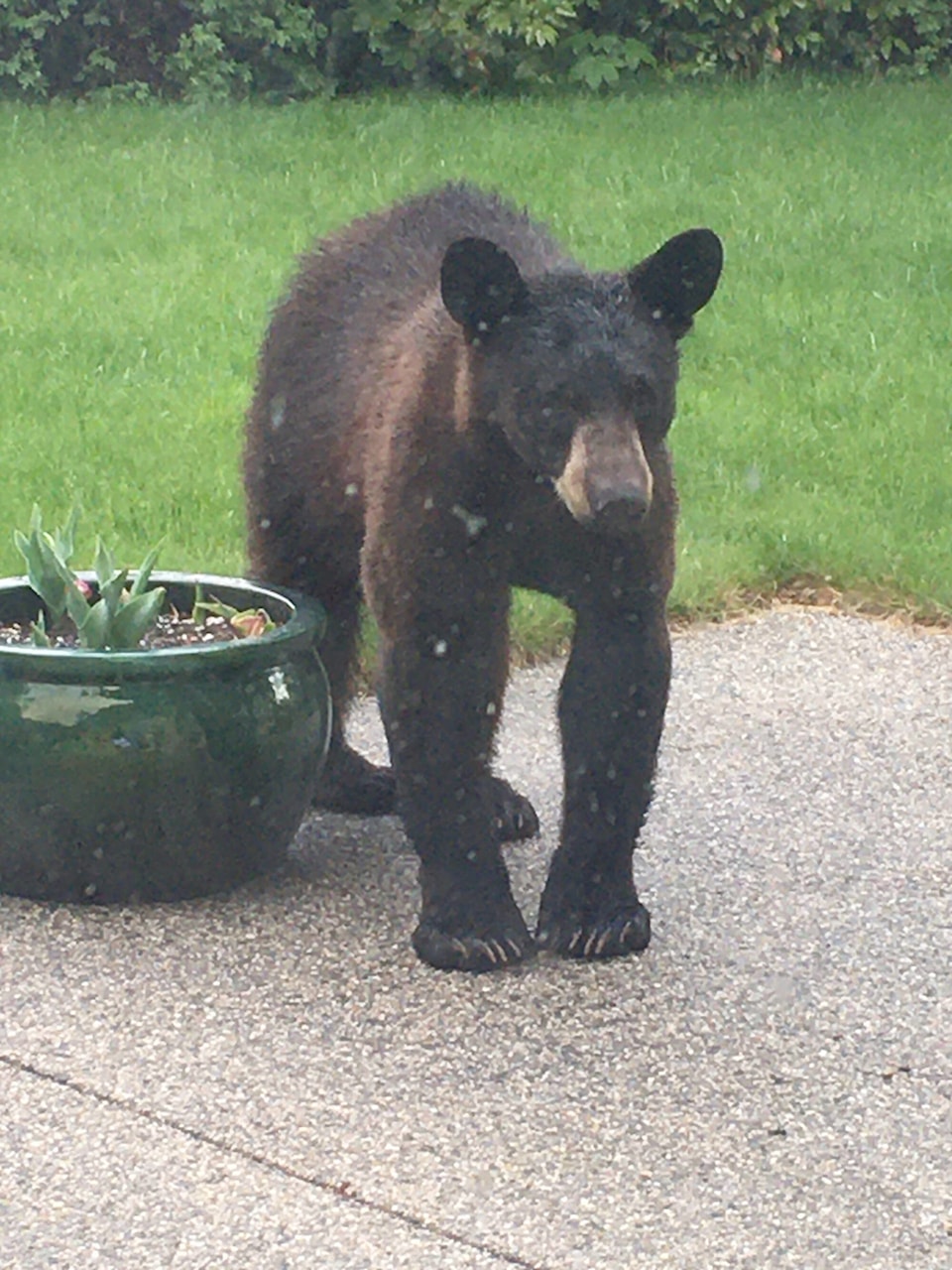As hungry bears are preparing for the winter, residents within the Regional District of Okanagan-Similkameen are noticing increased bear activity.
During the fall, black bears enter an extreme eating phase called hyperphagia, when they consume up to 20,000 calories a day to fatten up for the winter.
“As long as a bear is moving through our community, is not lingering, and is not interacting with people or our property, then there is no conflict,” the regional district said in a news release. “There are many situations when a bear moving through the community is to be expected, such as when they are trying to access a natural food source like a fish- bearing stream, or trying to access foraging opportunities on the other side of what was once their normal home range.”
READ ALSO: Bears seen in Summerland neighbourhoods
READ ALSO: Keremeos issues warning after bear wanders into village
However, when bears stop moving through the community and start using it as a foraging area for human-provided foods, conflicts may develop.
Bears that start using human-provided foods can become food-conditioned. Once a bear starts equating humans with foods, they can lose their natural wariness of humans and become what is called human-habituated.
A habituated bear tolerates humans in much closer proximity than what is safe for both bears and humans. This increases the potential for a dangerous interaction between the bears and people.
To reduce the risk of a conflict with bears, the regional district urges people to take precautions with their garbage. Between 2014 and 2021, around 60 per cent of calls to the Conservation Officer Service regarding black bears occurred when garbage was present.
To reduce the risk of a bear encounter, the regional district offers several measures for managing garbage.
The regional district offers some suggestions
• Store garbage in a secure building until collection day or consider purchasing a bear-resistant household cart.
• Ensure bins are tightly closed.
• Regularly wash all recycling items and clean the bins that contain garbage or recycling.
• Do not leave garbage in the back of a truck, even if it has a canopy.
• If you cannot store garbage securely, freeze smelly items and add to the bin only on the morning of collection.
Fruit trees are also a potential source of food for bears at this time of year. The regional district offers the following suggestions to manage fruit trees:
• Pick all ripe fruit.
• If any overripe fruit falls, ensure it is regularly cleaned up.
• Maintain healthy trees with annual maintenance and fruit reduction methods.
If there is a potential wildlife conflict, please contact the Report All Poachers and Polluters line at 1-877- 952-7277. This will allow conservation officers to assess the risk levels and work towards a safe solution for both the community and the wildlife involved.
To report a typo, email:
news@summerlandreview.com.
news@summerlandreview.com
Like us on Facebook and follow us on Twitter.
